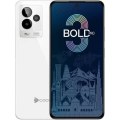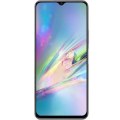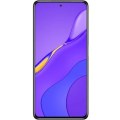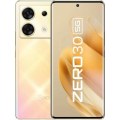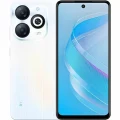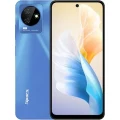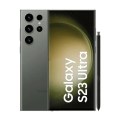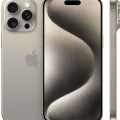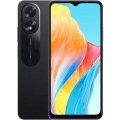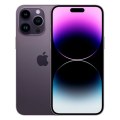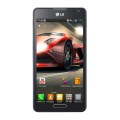- Home
- Main Catalog
- Xiaomi
- Xiaomi 14 Pro Specs, Price in Pakistan
Xiaomi 14 Pro Specs, Price in Pakistan
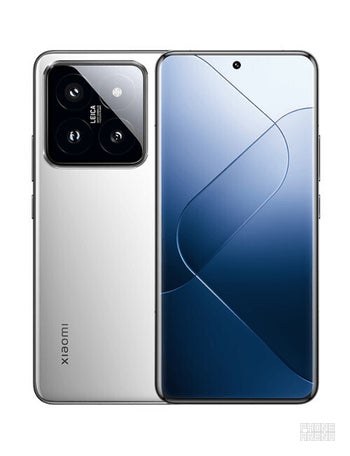


-
CPU: Octa-core, 1x 3.3GHz Cortex-X4 + 5x 3.2GHz Cortex-A720 + 2x 2.3GHz Cortex-A520
-
RAM: 12 GB
-
Storage: 256/512GB/1TB, Built-in, 12/16GB RAM
-
Display: 6.7 inches 3200 x 1440 pixels, 20:9 ratio, 521 PPI
-
Camera: 50 MP (Triple camera) 32 MP front
-
OS: Android 14
Xiaomi 14 Pro Price in Pakistan & Specifications
Xiaomi 14 Pro price in Pakistan is expected to start from 184,999 PKR. There will be in multiple variant of 12 GB RAM / 256 GB Storage, 16 GB RAM / 512 GB Storage and 16 GB RAM / 1024 GB Storage with Xiaomi 14 Pro. Xiaomi’s upcoming mobile Xiaomi 14 Pro is expected to launch soon in Pakistan. Xiaomi 14 Pro will come with multiple color options of Black,Silver,Titanium and Green. The handset houses amazing internal specs, screen size, camera setup, battery timing and Xiaomi 14 Pro mobile performance. Xiaomi 14 Pro camera setup includes 50 MP Triple rear camera and 32 MP selfie camera. Display of Xiaomi 14 Pro supports upto 1440 x 3200 pixels Resolution and has screen size of 6.73″ inches. The Performance of Xiaomi 14 Pro is based on Qualcomm Snapdragon 8 Gen 3 (4 nm) Chipset and Adreno 750 GPU. Mobile has battery capacity of 4880 mAh. Price of Xiaomi 14 Pro in Pakistan sounds good under 184,999 PKR. Xiaomi 14 Pro buy online will be available soon on OLX, Daraz, Whatmobile and PriceOye. Xiaomi 14 Pro will also be available for sale on other renowned online mobile shops all over the Pakistan.
Xiaomi 14 Pro Pros and Cons
Pros
- Powerful Processor
- 8K rear and 4K front video recording
- Fingerprint (under-display)
- 120W fast charging
- 50W wireless and 10W reverse charging
- Amazing camera performance
Cons
- Display and resolution same as previous model
Specs
General
| Device Type | Smart Phone |
| Model | Xiaomi 14 Pro |
| Announced | October, 2023 |
| Released | April, 2025 |
| Status | Coming Soon |
| Price | Rs 184999 |
Design
| Type Design Type called form factor refers to a mobile phone's size, shape, and style as well as the layout and position of major components of phone. There are three major form factors seen in mobile phones => bar phones, folding phones and sliding phones. | Bar |
| Dimensions | 6.35 x 2.96 x 0.33 inches (161.4 x 75.3 x 8.5 mm) |
| Weight | 7.87 oz (223.0 g) |
| Protection |
Back: Glass Resistance: Yes; IP68 |
| Colors |
Black, Silver, Titanium, Green |
Network
| 2G Network |
SIM1: GSM 850 / 900 / 1800 / 1900 SIM2: GSM 850 / 900 / 1800 / 1900 |
| 3G Network |
HSDPA 800 / 850 / 900 / 1700(AWS) / 1900 / 2100 |
| 4G Network |
LTE band 1(2100), 3(1800), 7(2600), 8(900), 20(800) |
| 5G Network |
n1, n3, n5, n7, n8, n28, n38, n40, n41, n48, n66, n77, n78, n79, SA, NSA |
| SIM SIM (Subscriber Identity Module) is a small card that contains mobile network subscriber's account information. This allows the phone using the card to attach to a mobile network. The SIM card is most commonly associated with GSM and UMTS mobile networks. Moving a SIM card from one phone to another allows a subscriber to switch mobile phones without having to contact their mobile network carrier. SIM cards can also be used by a phone to store limited amounts of data, such as phone numbers and text messages. | Nano SIM |
Display
| Display Type Display Technology => A number of display technologies and types used in mobile phones => TFT (Thin Film Transistor), IPS (In-Place Switching), OLED (Organic Light Emitting Diode), AMOLED (Active-Matrix Organic Light-Emitting Diode), Super AMOLED (an even advanced version of AMOLED), Resistive Touchscreen (Resistive touchscreens contain two layer of conductive material with a very small gap between them which acts as a resistance), Capacitive Touchsceen (Capacitive touchscreen technology consists of a layer of glass coated with a transparent conductor) | LTPO AMOLED Capacitive Touchscreen, 68B Colors, Multitouch |
| Size | 6.73 Inches |
| Resolution | 1440 x 3200 Pixels (~521 PPI) |
| Display Protection Display Protection => Gorilla Glass is a special alkali-aluminosilicate glass shield with exceptional damage resistance that helps protect mobile displays from scratches, drops, and bumps of everyday use, It is always better to go for a smartphone with Gorilla Glass for that added protection and peace of mind. | Xiaomi Longjing Glass |
| Features |
120Hz, Dolby Vision, HDR10+, 3000 nits (peak) |
| Secondary Display | Wireless screen share |
Media
| Loudspeaker | Earpiece, Multiple speakers |
| Handsfree | No 3.5mm jack |
Camera
| Primary Camera is able to capture photographs and usually videos, The most important characteristics of a camera are the resolution (measured in megapixels), lens focus type (fixed or automatic), higher megapixel cameras are known to capture higher quality photos, but not always a good measurement of the photos quality. | Triple Camera: 50 MP, f/1.4-f/4.0, 23mm (wide), 1/1.31", dual pixel PDAF, Laser AF, OIS + 50 MP, f/2.0, 75mm (telephoto), PDAF (10cm - ∞), OIS, 3.2x optical zoom + 50 MP, f/2.2, 14mm, (ultrawide), AF, dual-LED dual-tone flash |
| Camera Features | Leica lens, HDR, panorama, Video (8K@24fps (HDR), 4K@24/30/60fps (HDR10+, 10-bit Dolby Vision HDR, 10-bit LOG), 1080p@30/60/120/240/960fps, 720p@1920fps, gyro-EIS) |
| Flash Flash Light => There is commonly two types of flash lights are used in camera mobile phones, LED Flash (LED flash offers lower power consumption with drive circuitry that takes up very little room, LEDs can be strobed faster than any other light source), Xenon Flash (xenon flash produces an extremely intense full-spectrum white light for a very short duration) | Yes |
| Secondary | 32 MP, (wide), HDR, panorama, Video (4K@30/60fps, 1080p@30/60fps, gyro-EIS) |
Software
| Operating System OS => Every computer system run on a base software called Operating System (OS). Operating System controls all basic operations of the computer (such as smartphone, PDAs, tablet computers and other handheld devices). The Operating System allows the user to install and run third party applications (apps), apps are used to add new functionality to the device. | Android 14 OS |
| User Interface UI or user interface of a device is the look and feel of the on-screen menu system. How it works, its color scheme, how it responds to button presses, all of these things are part of the user interface. | HyperOS |
| Facebook Facebook is a popular free social networking website that allows registered users to create profiles, upload photos and video, send messages and keep in touch with friends, family and colleagues. The site is available in 37 different languages. | |
| Youtube Youtube is a popular free video-sharing website, Youtube is the largest video sharing site in the world, Millions of users around the world have created accounts on the site that allow them to upload videos that anyone can watch. |
Hardware
| Chipset Chipset is a group of integrated circuits designed to perform one or a more dedicated functions, often with real time computing constraints, Popular smartphones are equipped with more advanced embedded chipsets that can do many different tasks depending on their programming. | Octa-core (1 x 3.3 GHz Cortex-X4 + 5 x 3.2 GHz Cortex-A720 + 2 x 2.3 GHz Cortex-A520) |
| CPU CPU (Central Processing Unit) mostly known as processors, CPU processes instructions in order to carry out certain functions that make your device operate properly. Processors are often described as the brain of computers, smartphones and tablets, Smartphones and tablets rely on processors to carry out their every task, Processors are an incredibly important factor in selecting any type of computing device, including your smartphone. | Qualcomm SM8650-AB Snapdragon 8 Gen 3 (4 nm) |
| GPU GPU (Graphics Processing Unit) is a single-chip processor designed to rapidly manipulate and alter memory to accelerate the creation of images in a frame buffer intended for output to a display, This includes things such as lighting effects, object transformations, and 3D motion. | Adreno 750 |
| RAM (Memory) RAM (Random Access Memory) is a type of computer memory that can be accessed randomly, any byte of memory can be accessed without touching the preceding bytes that allows information to be stored and accessed quickly from random locations. RAM is the most common type of memory found in computer systems, smartphones, tablets and other electronic devices. | 12 GB |
| Internal Storage Internal Storage is a data storage space (flash memory) mostly used in smartphones, tablets and other electronic devices where operating system, apps, music, photos, videos, files and other user data Is stored. | 256/512GB/1TB, Built-in, 12/16GB RAM |
| Card Slot Memory Card Slot is a special slot for inserting a memory card. Memory cards allow you to expand the phone's built-in memory, A memory card (sometimes called a flash memory card or a storage card) is a small storage medium used to store data such as text, pictures, audio, and video, for use on small, portable or remote computing devices such as mobile phones, mp3 players, digital cameras. | No |
| Sensors Sensors are electronic components that detects and responds to some type of input from the physical environment. The specific input could be light, heat, motion, moisture, pressure and location, The output is generally a signal that is converted to use in computing systems, a location sensor, such as a GPS receiver is able to detect current location of your electronic device. | Accelerometer, Barometer, color spectrum, Compass, Fingerprint (under display, optical),, Gyro, Virtual proximity sensing |
Connectivity
| Bluetooth Bluetooth is a wireless communications technology for exchanging data between mobile phones, headsets, computers and other network devices over short distances without wires, Bluetooth technology was primarily designed to support simple wireless networking of personal consumer devices. | v5.4 with A2DP, LE, aptX HD, aptX Adaptive |
| Infrared Infrared connectivity is an old wireless technology used to connect two electronic devices. It uses a beam of infrared light to transmit information and so requires direct line of sight and operates only at close range. | |
| Wi-fi Wi-Fi is a popular wireless networking technology using radio waves to provide high-speed network connections that allows devices to communicate without cords or cables, Wi-Fi is increasingly becoming the preferred mode of internet connectivity all over the world. | Wi-Fi 802.11 a/b/g/n/ac/6e/7, dual-band, Wi-Fi Direct |
| Wi-fi Hotspot | |
| USB | USB Type-C 3.2 Gen 2, OTG |
| GPS GPS The Global Positioning System is a satellite-based radio navigation system, GPS permits users to determine their position, velocity and the time 24 hours a day, in all weather, anywhere in the world, In order to locate your position, your device or GPS receiver must have a clear view of the sky. | Yes + GPS (L1+L5), GLONASS (G1), BDS (B1I+B1c+B2a), GALILEO (E1+E5a), QZSS (L1+L5), NavIC (L5) |
| NFC NFC (Near field communication) is a set of standards for smartphones and similar devices to establish peer-to-peer radio communications with each other by touching them together or bringing them into proximity, usually no more than a few inches. | |
| HDMI HDMI (High-Definition Multimedia Interface) is a compact audio/video interface for transferring uncompressed video data and compressed or uncompressed digital audio data from a HDMI-compliant source device to a compatible computer monitor, video projector, digital television, or digital audio device. | |
| Wireless Charging Wireless Charging (Inductive Charging) uses an electromagnetic field to transfer energy between two objects. This is usually done with a charging station. Energy is sent through an inductive coupling to an electrical device, which can then use that energy to charge batteries or run the device. | 50W wireless, 100% in 40 min (advertised), 10W reverse wireless |
Data
| GPRS GPRS (General Packet Radio Service) is a packet oriented mobile data service on the 2G and 3G cellular communication system's global system for mobile communications (GSM), Generally, GPRS is used for the purpose of wireless data transfer, such as sharing pictures and videos or browsing the Internet via a mobile phone connection. | |
| EDGE EDGE (Enhanced Data GSM Environment) is a wireless network technology generally considered the next step in the 2G network offers data transfer rates up to four times faster than ordinary GSM networks, Generally, EDGE is used for the purpose of wireless data transfer, such as sharing pictures and videos or browsing the Internet via a mobile phone connection. |
Messaging
| SMS SMS (Short Messaging Service) is a text messaging service component of phone, Web, or mobile communication systems. It uses standardized communications protocols to allow mobile phone devices to exchange short text messages over the networks. | Yes |
| MMS MMS (Multimedia Messaging Service) is a standard way to send messages that include multimedia content (audio clips, video clips and images) to and from mobile phones over wireless networks using the WAP protocol. |
Battery
| Battery Type Battery Type => Cell phones run on various kinds of batteries depending on the manufacturer, phone size or shape and features. There are basically four types of cell phone batteries => Lithium Polymer, Lithium Ion, Nickel Metal Hydride and Nickel Cadmium. | Li-Poly (Lithium Polymer) |
| Capacity Battery Capacity is a measure (typically in Amp-hr) of the charge stored by the battery, and is determined by the mass of active material contained in the battery. The battery capacity represents the maximum amount of energy that can be extracted from the battery under certain conditions. | (Li-Po Non removable), 4880 mAh |
Reviews
Disclaimer Note
We always try our best to keep our website content and information updated and correct, the material and information contained on our website is for general information purposes only, You should not rely upon the material and information as a basis for making any business, legal or any other decisions.

